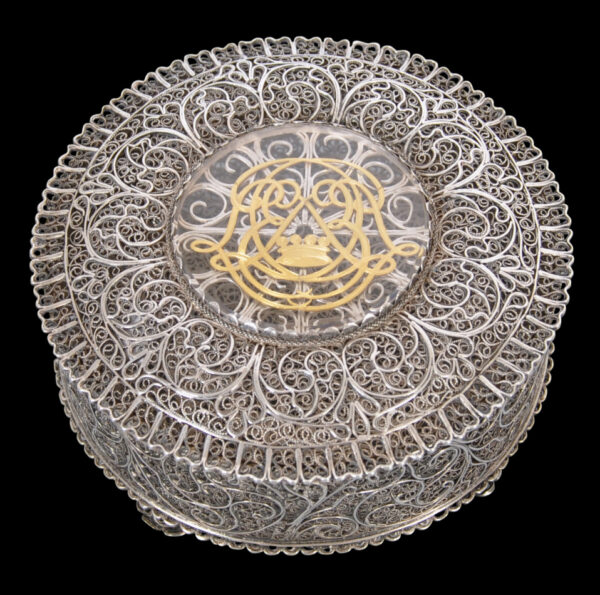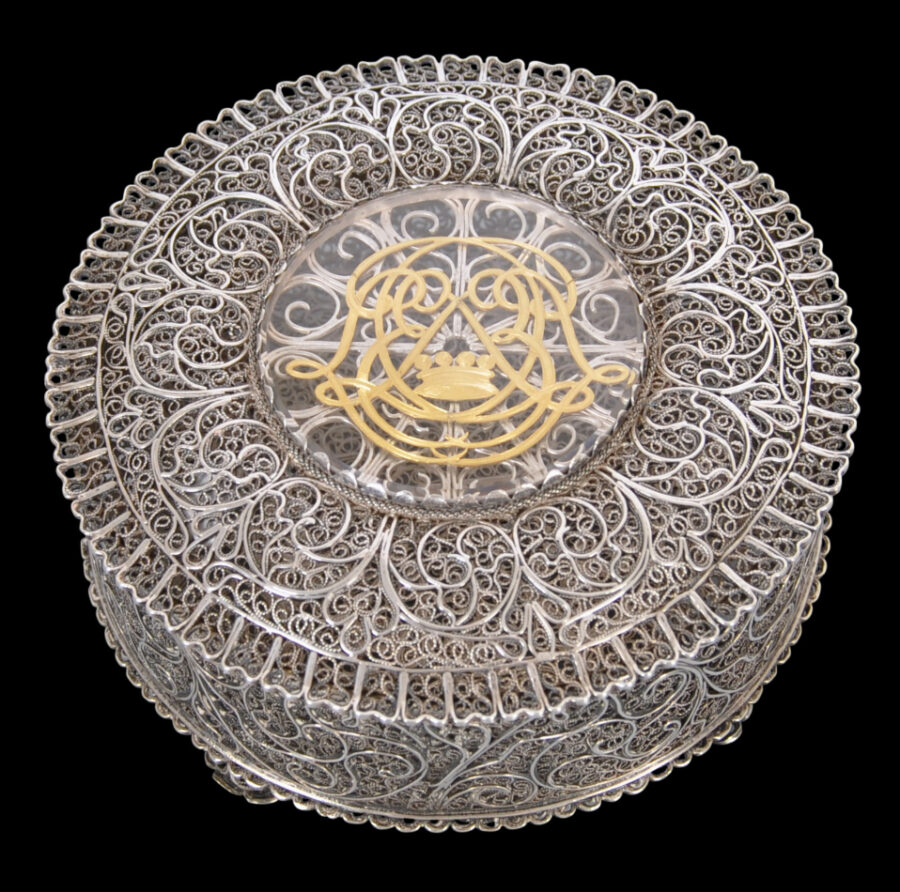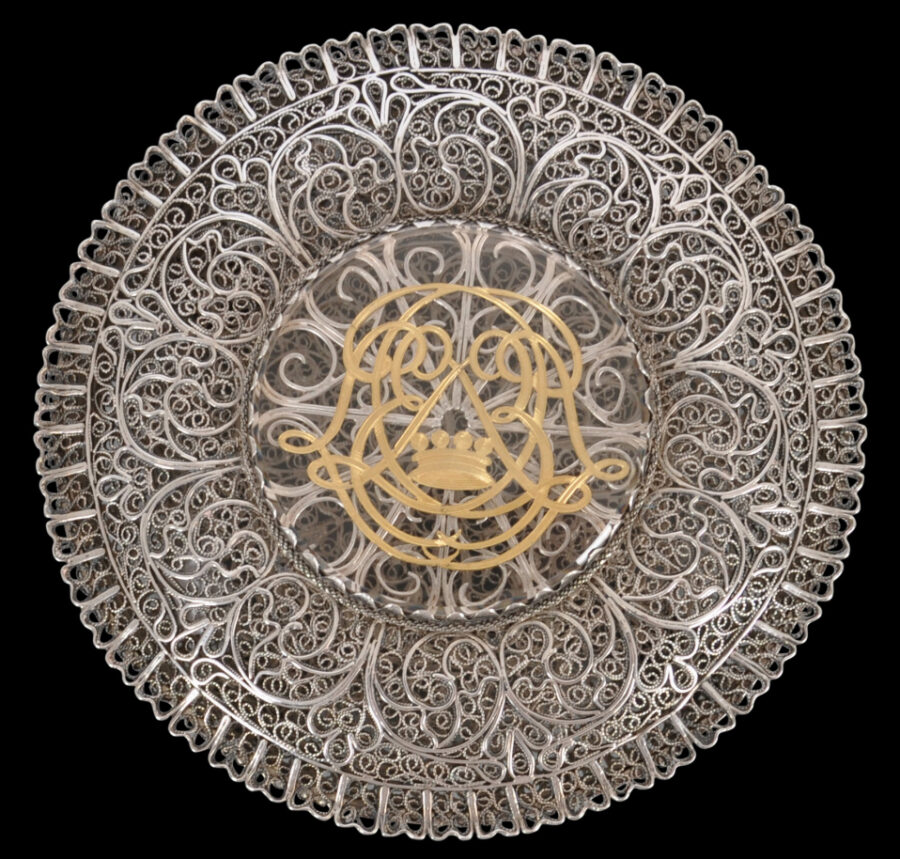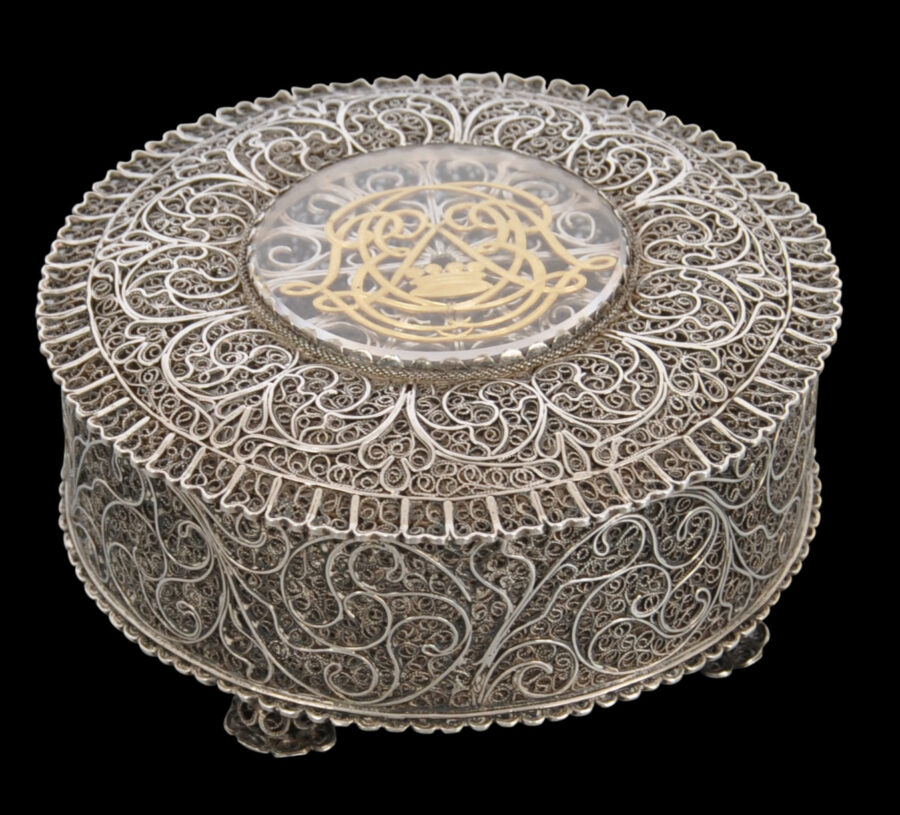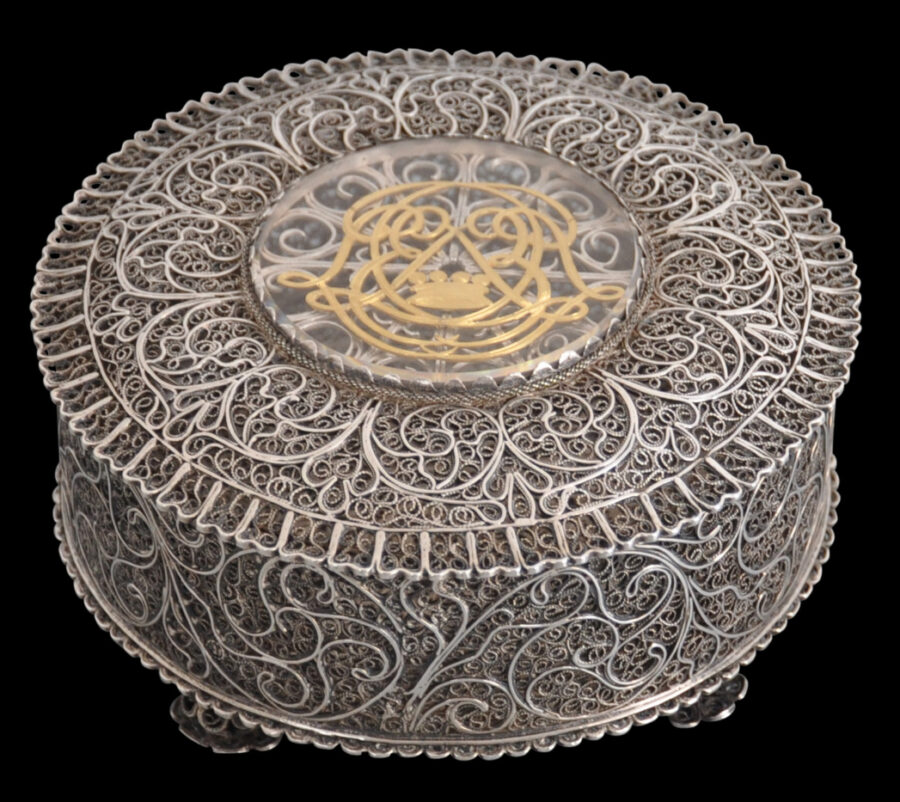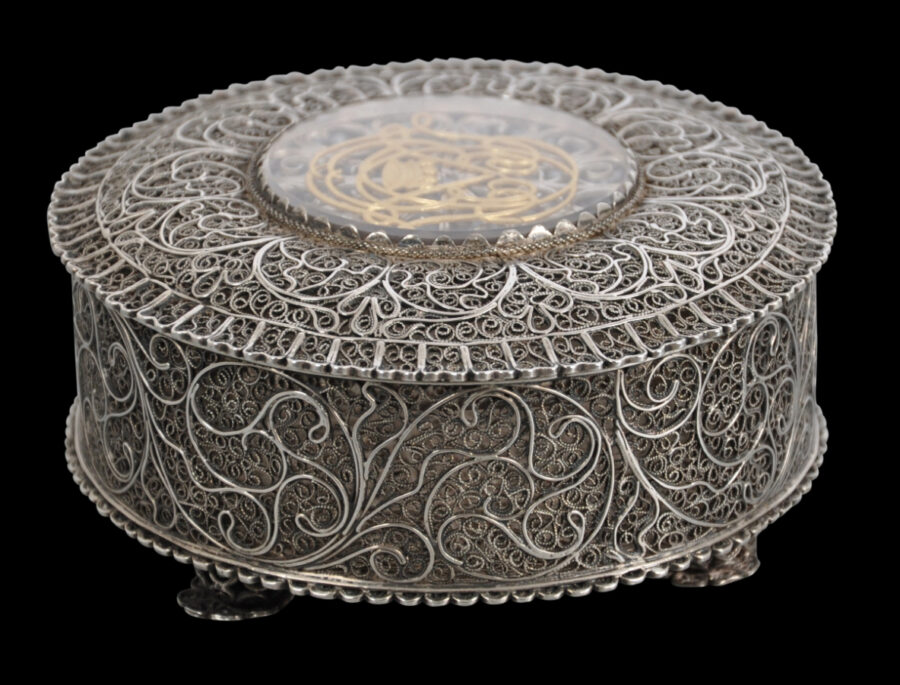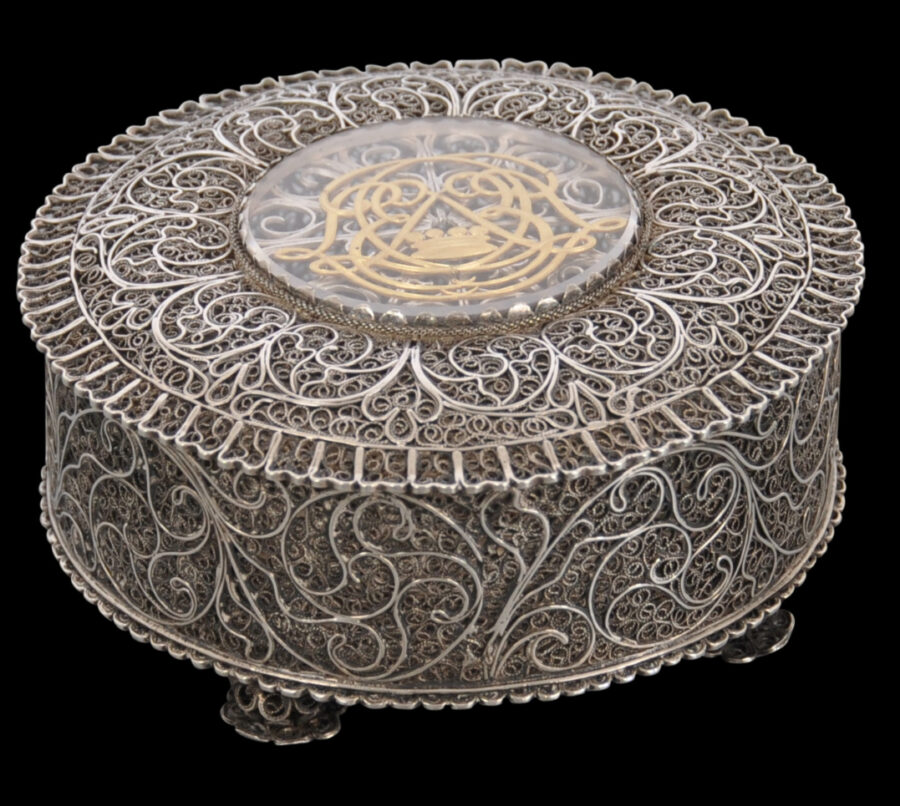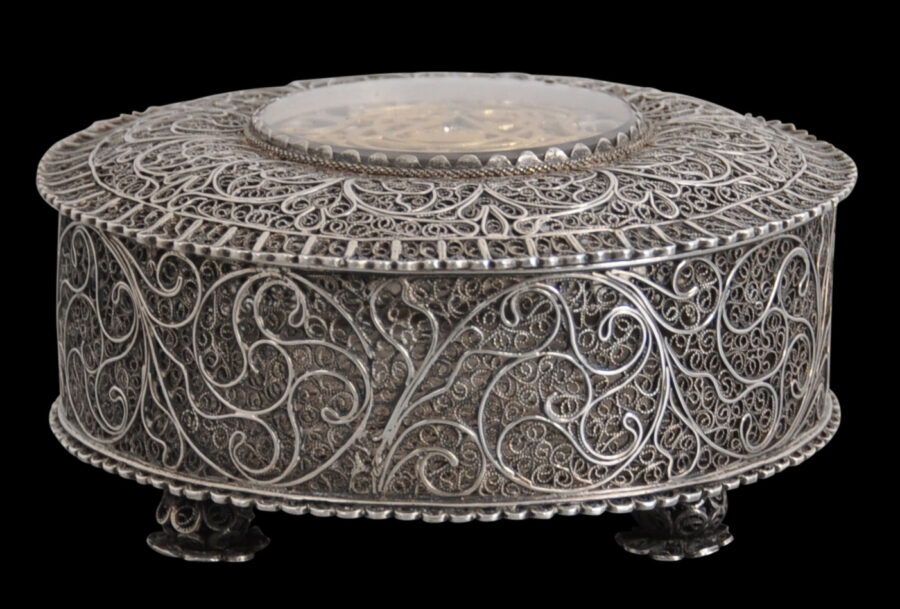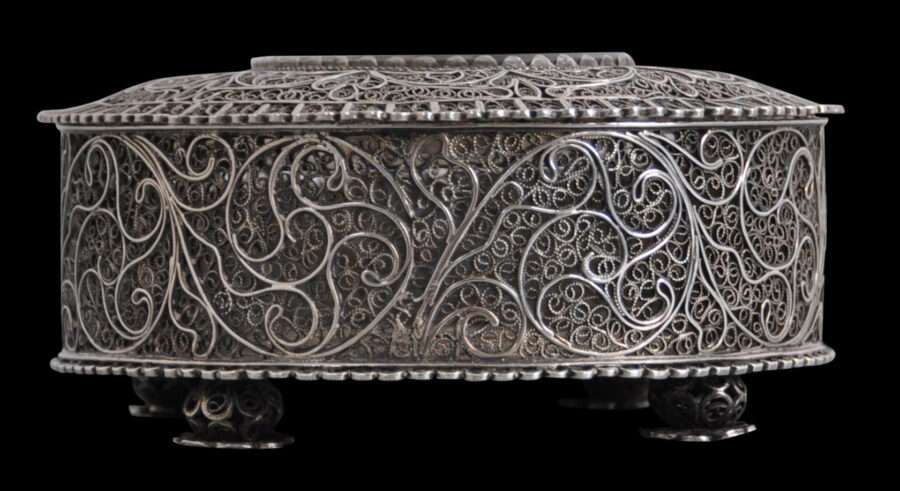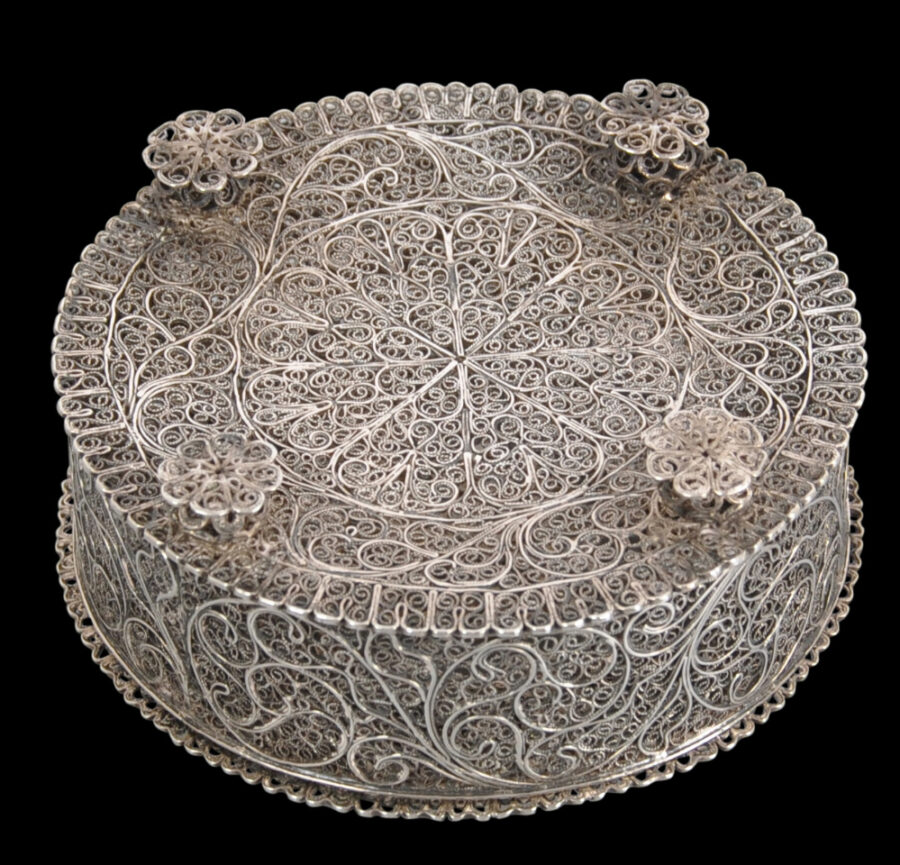This is a particularly attractive and well-made silver filigree box. The condition is superb, and it is unusually complex. It also is unusual in that the cover has a central roundel of bevelled glass which covers a royal monogram or cypher which has been applied in gilded silver. The interplay between the gold and the silver is particularly pleasing.
All aspects are made of the silver filigree – the cover, the sides, the base and even the ball feet on which it sits.
The lid is particularly pleasing with its crenulated contours and lotus petal outer border.
Piotrovsky (2006, p. 67) illustrates a writing box with related filigree work most probably made in Batavia which was made for the Dutch Stadholder William III of Orange which includes (in filigree with broader wires) his arms and his cypher – which looks similar though is not the same as the cypher presented on this box. (William later became William III of England.) The similarity in formulation and the presence of the crown suggests that this box also was made for a member of the House of Orange-Nassau, what effectively became Dutch royal family, during roughly the same period.
The box is stamped with the ‘crowned V’ mark used by the Dutch authorities between 1814-1893 as a duty mark on foreign-made silver. This is important and adds further evidence as to the provenance of this box, ie that it most probably was made in the colonies of Dutch East Indies.
The filigree work on this box suggests that it has come from or been made by an artisan who came from Sumatra. Such filigree work was known in Batavia at the time as ‘Westcust werk’ (Veenendaal, 1995, p. 88).
The box is in excellent condition. It was acquired in England and so might have associations with the family of William III of Orange (later King William III of England.) It is a beautiful and rare piece.
References
Haags Gemeentemuseum, V.O.C. – Zilver: Zilver uit de periode van de Verenigde Oostinische Compagnie 17de en 18de eeuw, 1983.
Piotrovsky, M. et al, Silver: Wonders from the East – Filigree of the Tsars, Lund Humphries/Hermitage Amsterdam, 2006.
Tchakaloff, T.N. et al, La Route des Indes – Les Indes et L’Europe: Echanges Artistiques et Heritage Commun 1650-1850, Somagy Editions d’Art, 1998.
Voskuil-Groenewegen, S.M. et al, Zilver uit de tijd van de Verenigde Oostindische Compagnie, Waanders Uitgevers, 1998.
Zandvlieyt, K. et al, The Dutch Encounter with Asia 1600-1950, Rijksmuseum Amsterdam, 2002.


